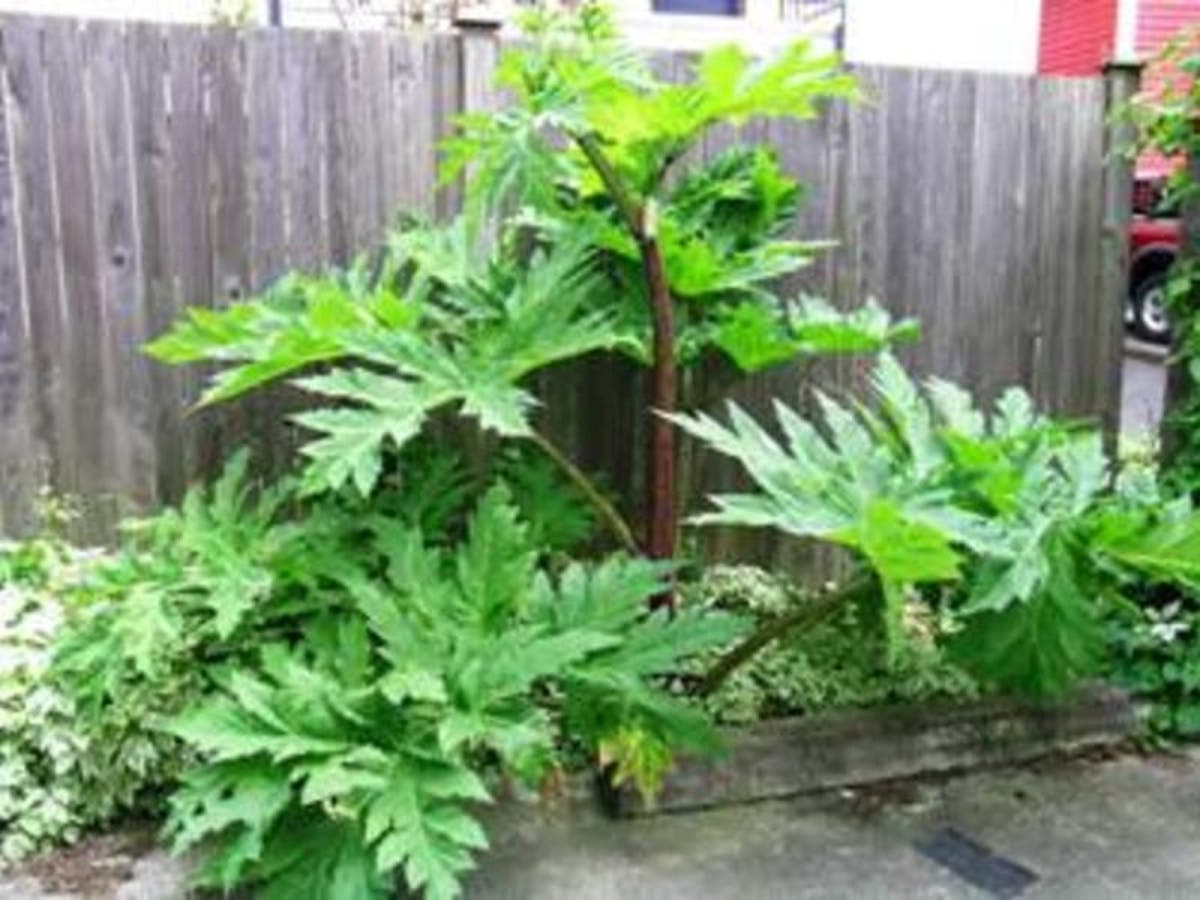Home & Garden
Burning, Blinding Hogweed Plant Sends Teen To Hospital
A weed that has been dubbed the "plant from hell" has left a teenager with severe burns after he encountered the plant in Fredericksburg.

FREDERICKSBURG, VA — A notorious weed that has been dubbed the "plant from hell" has left a Spotsylvania-area teenager with second- and third-degree burns to his face and arm, according to multiple reports. The hogweed plant has claimed another victim.
Alex Childress, 17, came across the plant while working at a landscaping job Tuesday in the Fredericksburg area. After chopping it down, his father, Justin Childress, told the Richmond Times-Dispatch, parts of it brushed against his son's face and arm. Several hours later, after telling his dad he had a really bad sunburn, Alex sought medical treatment.
"Alex doesn’t burn. He tans," his father said. "The top layer of skin on the left side of his face basically was gone and appeared to be like a really bad burn that had already peeled."
Find out what's happening in Fredericksburgwith free, real-time updates from Patch.
The Virginia Tech-bound freshman was taken to the burn unit at VCU Medical Center and discharged Thursday. His dad told the Free Lance-Star that Alex has handled the situation the same way he did after dislocating his kneecap last season while playing for Spotsylvania High School's football team. Two months, later, he was on the mat with the school's wrestling team.
"I’ve got to give it to him, he’s probably the toughest kid I know," Justin Childress said. "He took it with good spirits."
Find out what's happening in Fredericksburgwith free, real-time updates from Patch.
The giant hogweed plant was first confirmed in Virginia last month in Clarke County in Northern Virginia, and warnings posted by the Extension Service, Virginia Tech experts and others spread across the internet like a noxious weed.
Other states that have seen the plant include: Oregon, Washington, Wisconsin, Illinois, Indiana, Michigan, Pennsylvania, New York, and most other states in the Northeast.
New York health officials minced no words on its website when it came to the giant hogweed: "Do Not Touch This Plant!"
Scientists say there are plants across Virginia that closely resemble the giant hogweed — such as cow parsnip, which is native to the Commonwealth — so the chances are slim that the weed on your property is the troublesome giant hogweed. About 30 plants were found in Clarke County between Winchester and Leesburg, according to staffers at the Massey Herbarium at Virginia Tech. A previous property owner planted it as an ornamental species, experts said.
"In brief, the sap prevents your skin from protecting itself from sunlight, which leads to a very bad sunburn," said the New York Department of Environmental Conservation. "Heat and moisture (sweat or dew) can worsen the skin reaction. The phototoxic reaction can begin as soon as 15 minutes after contact, with sensitivity peak between 30 minutes and two hours after contact."
Classified as a tier one noxious plant, giant hogweed must be removed by someone wearing protective gear, and requires a permit to be moved across the state.
Mark Sutphin, an agricultural extension agent with Virginia Tech, said he handed part of the Clark County giant hogweed donned in a Tyvek suit and goggles. "Don't touch it," he told The Washington Post. "Don't cut it down unless you take extreme care."
(For more news like this, find your local Patch here. If you have an iPhone, click here to get the free Patch iPhone app; download the free Patch Android app here. And like Patch on Facebook!)
In early June, Virginia Department of Transportation workers found giant hogweed growing in Frederick County.
The alarm was first sounded by an Isle of Wight County Facebookpost that warned residents: "Giant hogweed makes poison ivy look like a walk in the park. Contact with this plant, combine with exposure to the sun, can produce third-degree burns and permanent blindness."
Reactions for anyone who handles the plant unprotected can vary, but sap from giant hogweed can make the skin so sensitive to sunlight that severe burns can occur from normal exposure to sun. Symptoms include painful blisters, which become darkly pigmented and can cause scars. Your skin can remain sensitive to sunlight for many years after exposure, as well. And, if the sap gets in your eyes, there is the potential for blindness, says Wight County.
Virginia Tech experts suggest that landowners who spot a plant they suspect is giant hogweed first check the ID guide (https://www.dec.ny.gov/animals/72766.html) and take a good photos to document the plant. Then check with your local Virginia Tech agricultural extension agent or the Virginia Department of Agriculture and Consumer Affairs for help identifying the plant.
Patch editors Deb Belt, Neal McNamara and Dan Hampton contributed to this report
Photo: King County (WA) Noxious Weed Control Program
Get more local news delivered straight to your inbox. Sign up for free Patch newsletters and alerts.